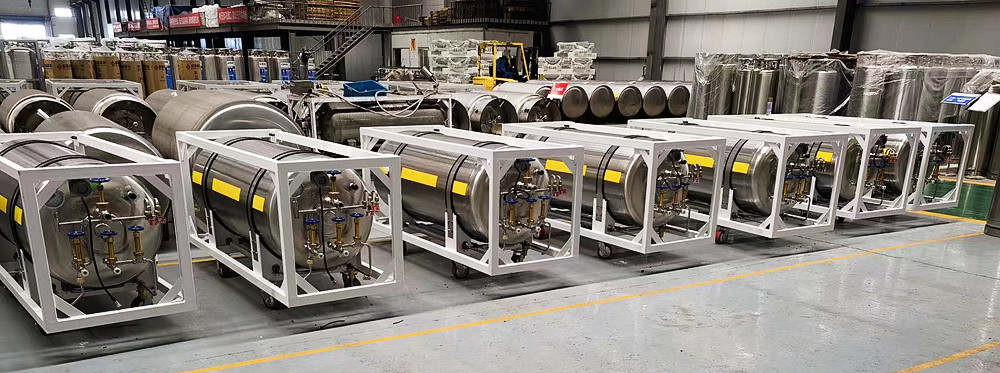Vehicle LNG storage tank refers to a high vacuum insulation container for storing LNG on a vehicle. Designed with double layer (vacuum) structure. The inner tank is used to store low-temperature liquid LNG, and its outer wall is wrapped with multiple layers of thermal insulation material, which has super thermal insulation performance. Thermal insulation system. The housing and support system are designed to withstand the external forces associated with the movement of the transport vehicle.
What is the background of LNG storage tanks for vehicles?
With the great development of the liquefied natural gas (LNG) industry in recent years, as a clean petrochemical energy, LNG has become more and more widely used in terminal applications due to its convenient transportation, flexible use, and freedom from pipeline network constraints. LNG is widely used in the transportation industry. The application of LNG has the advantages of safety, environmental protection, long vehicle mileage, obvious environmental protection and economic benefits; under the background of the world’s call for green environmental protection, energy saving and emission reduction, the expectation of using LNG as a vehicle fuel is increasing. high. The state actively promotes and implements the policy of energy conservation and emission reduction and replacing oil with gas, which effectively promotes the use and development of natural gas as an alternative fuel for transportation. In this context, LNG storage tanks for automobiles have a broad space for development and use.
What is the structure and working principle of LNG storage tanks for vehicles?
The structure of the LNG vehicle bottle is divided into the inner container of the storage tank, the outer container of the storage tank, the interface valve of the storage tank, the LNG level sensor and the adiabatic quilt.
The storage tank is a high vacuum insulation container for storing LNG. The main structure includes an inner tank and an outer tank, and the middle is a vacuum and thermal insulation type. At present, the maximum working pressure set by the inner tank is 1.59MPa, and the calculated pressure is 2 times the maximum working pressure. A multi-layer thermal insulation material composed of glass fiber paper and smooth aluminum foil is wound on the outer wall of the inner tank. The multi-layer material has the characteristics of low thermal conductivity, high thermal insulation performance and light weight under high vacuum conditions. The interlayer is equipped with palladium oxide, molecular sieve, etc. to prolong the vacuum service life. The shell design is mainly used to form an interlayer space with the inner tank to ensure the best thermal insulation effect of the inner tank. The better the effect, the longer the LNG will be stored in the tank.
The inner tank and the outer shell of the storage tank are supported by an axial combination (one end is fixed and one end is sliding), which can ensure that the tank will not have relative displacement and structural deformation between the inner tank and the outer shell due to bumping during operation. The phenomenon that the gallbladder breaks the support and pipeline due to the cold shrinkage after being filled with liquefied natural gas.
All external pipelines and pipeline accessories of the storage tank are set at one end of the storage tank and protected by an environmental protection ring or protective cover. The pipeline system is set up to meet the filling and supply of LNG.
Post time: Aug-05-2022


